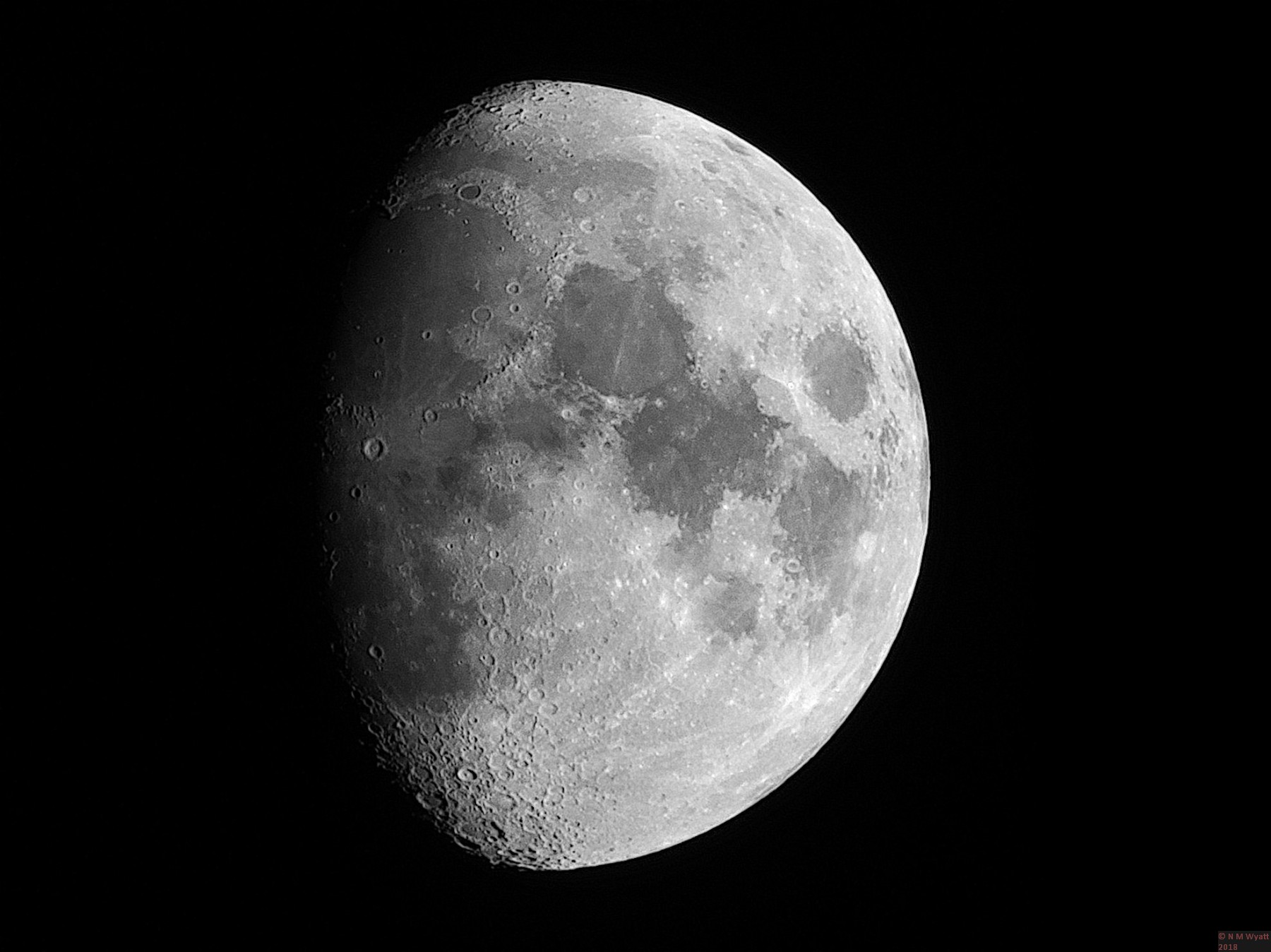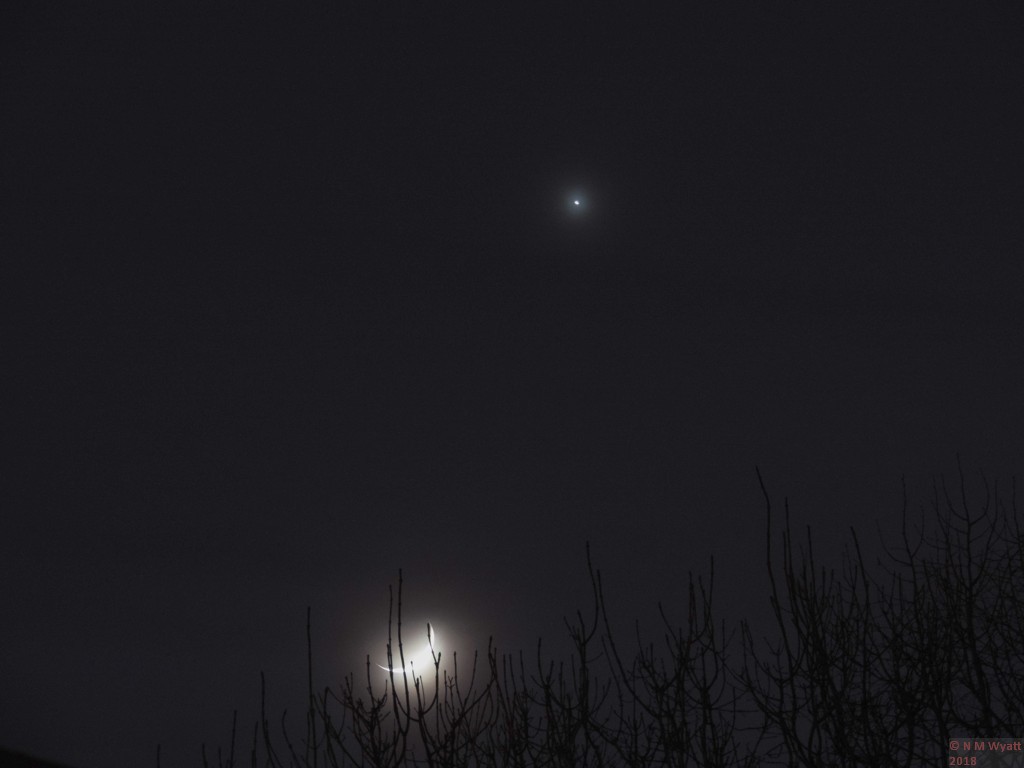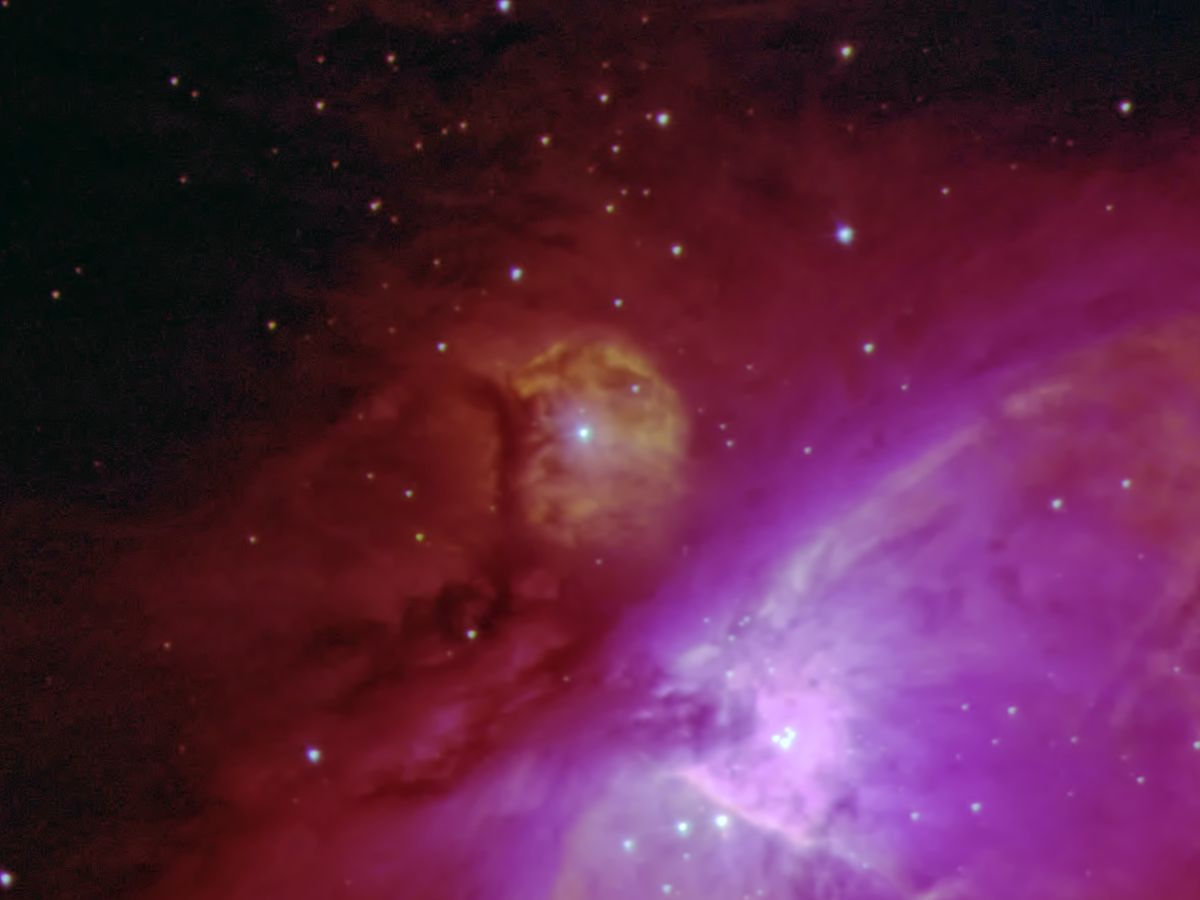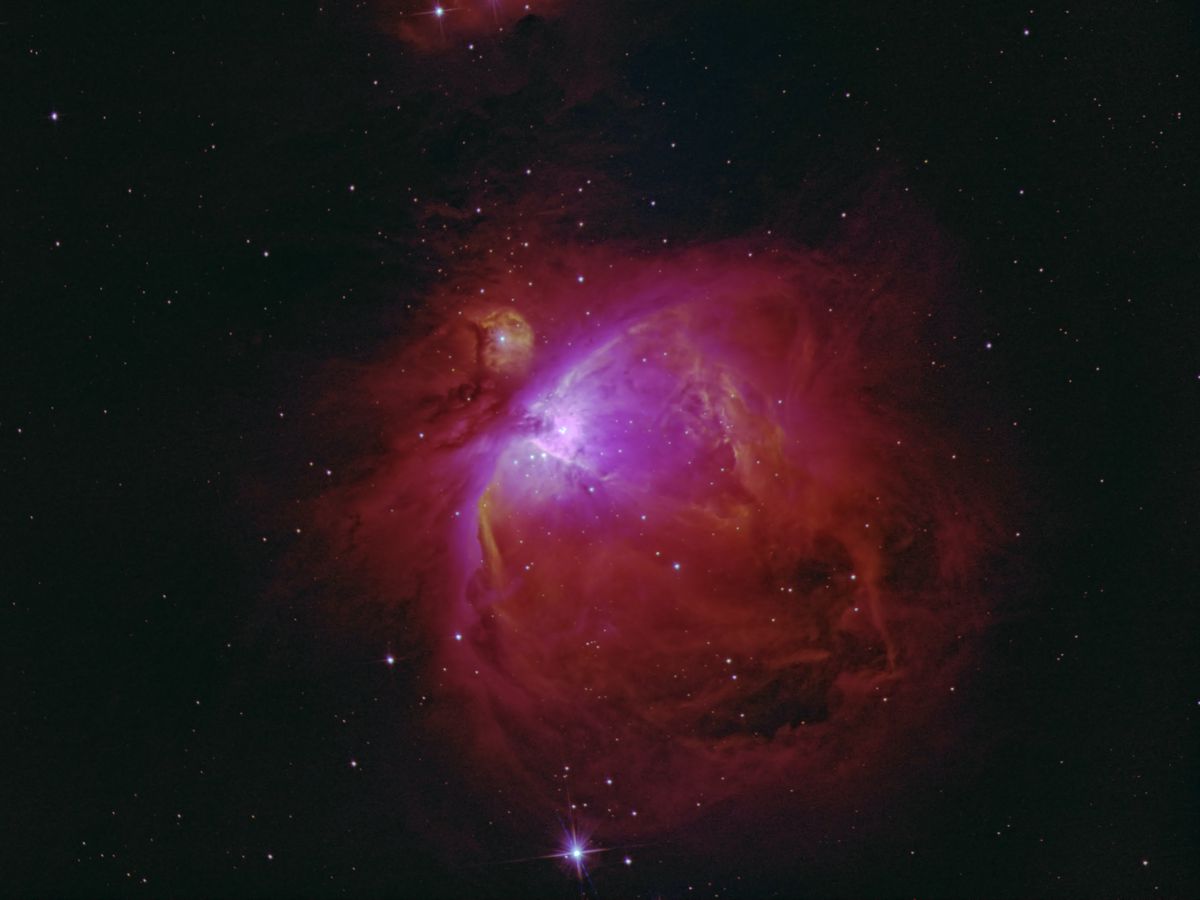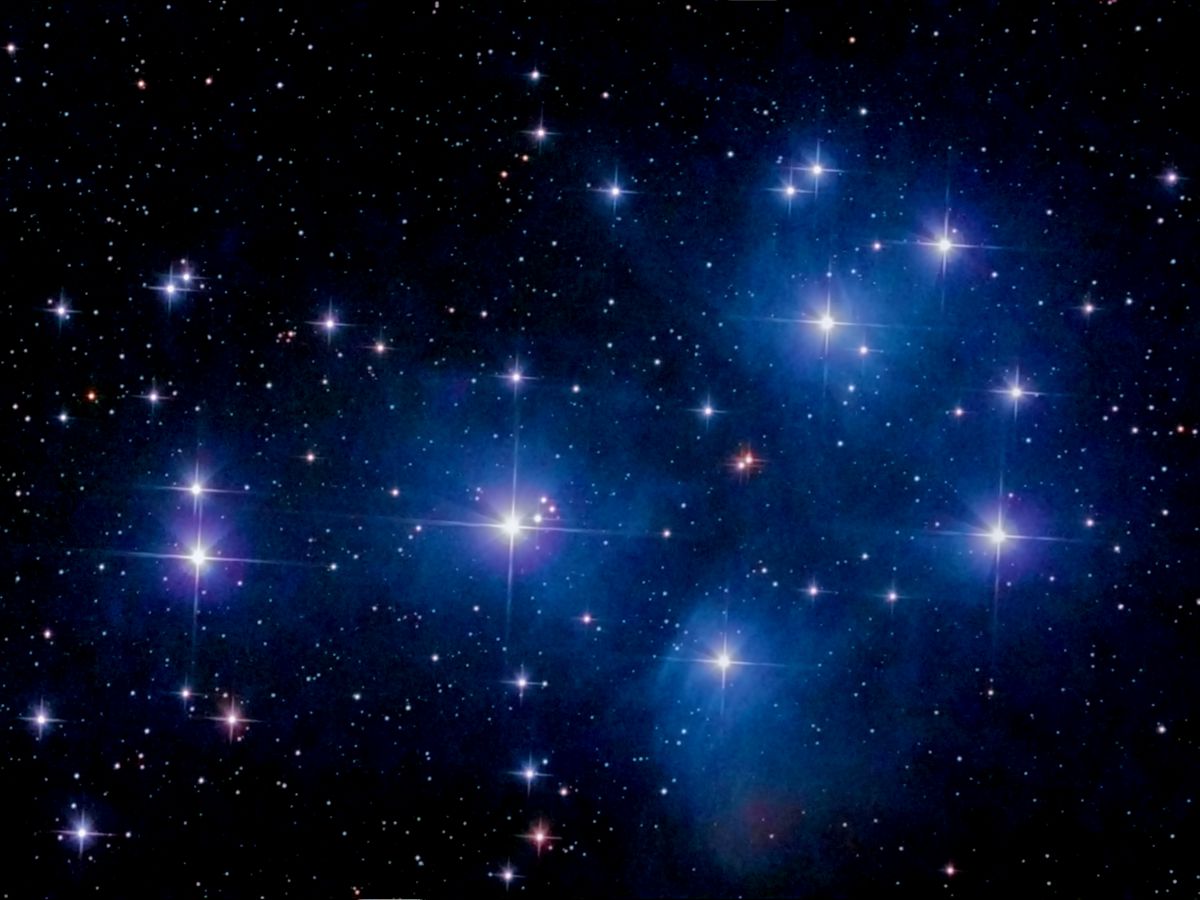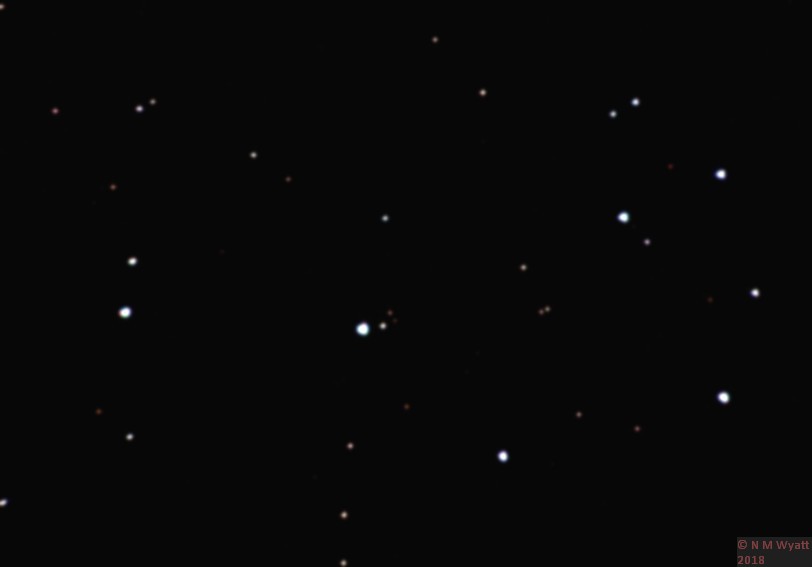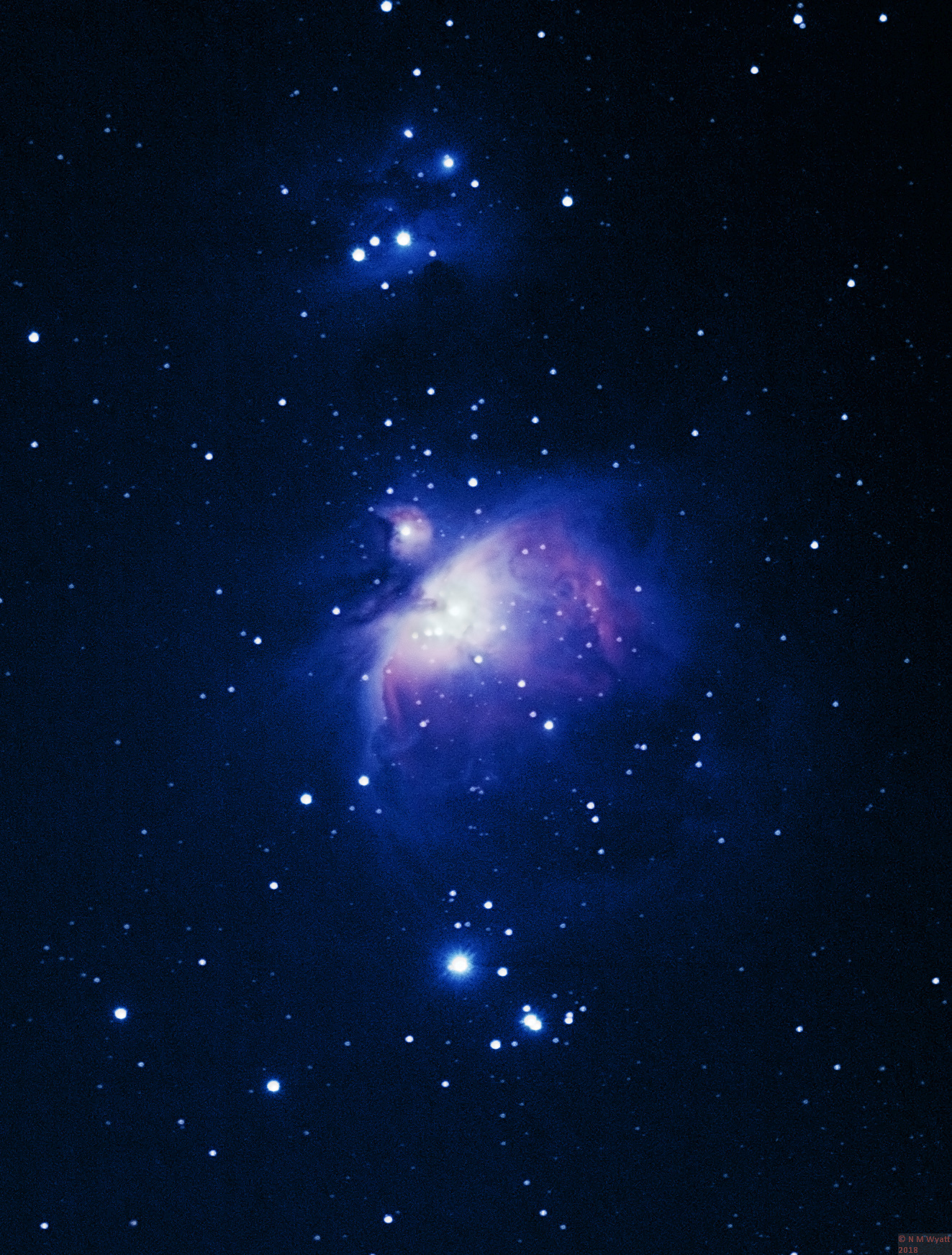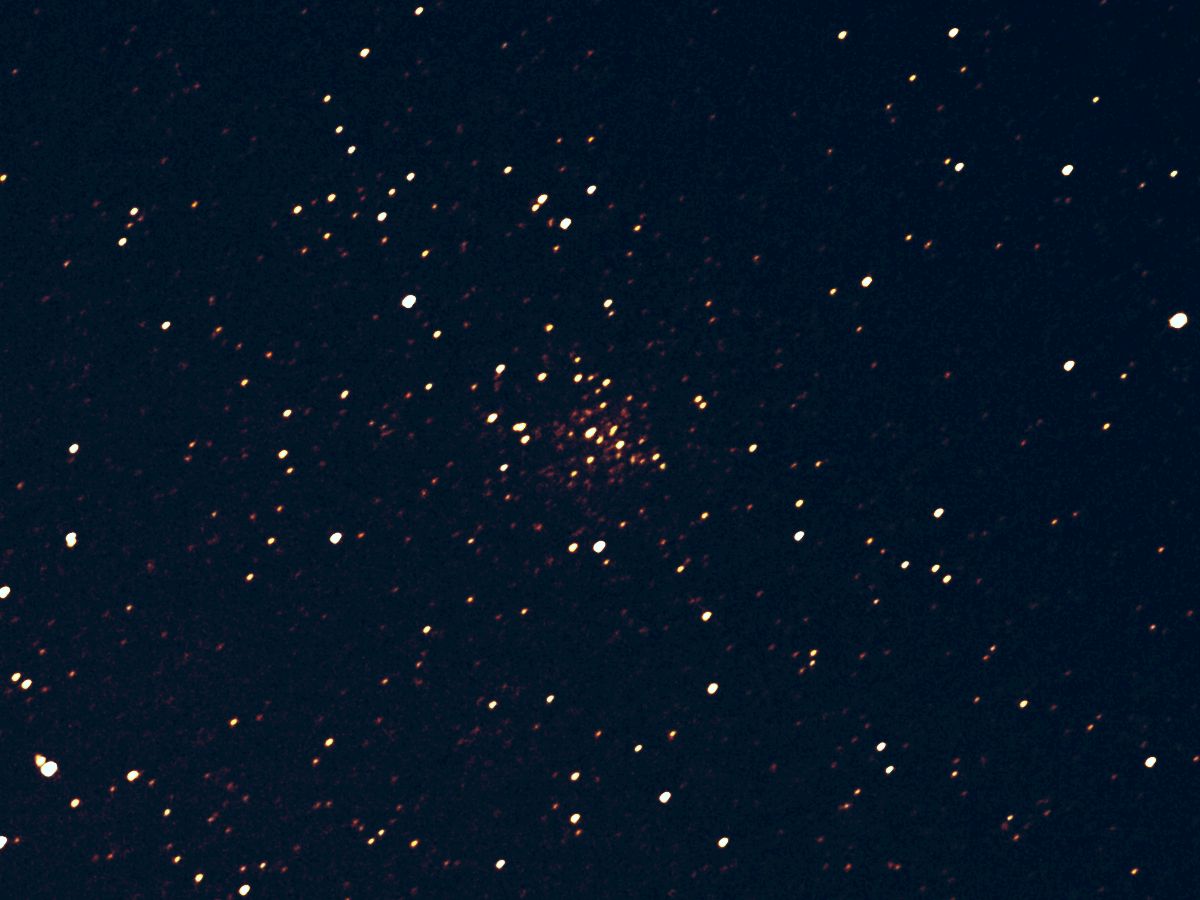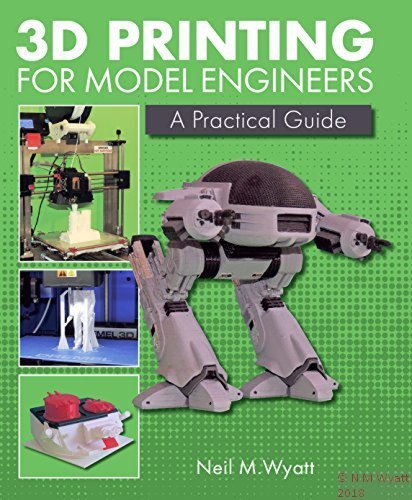If you find this website useful, please check out my books or visit my Amazon Author page. Or even Buy Me a Coffee!
Astronomy
Astrophotography
You are never too old to learn, and one of the thing that has opened my eyes has been discovering the quality of astronomical images that can be produced by amateurs with very modest equipment. By using digital cameras and image processing software it's a realistic ambition to produce images that compare favourably with those produced by the world's biggest telescopes fifty years ago - right in your back yard!
This website does not showcase the best astronomical pictures on the internet! It's a selection of pictures I have taken myself with basic equipment and free software. Producing images like these below, or even better ones, is within your reach!
Most importantly, you don't have to spend a fortune. My first serious scope, mount and tripod cost £180 on Ebay. I spent £40 on a more solid tripod, and about £200 on various bits and pieces including books and an ancient Canon EOS DSLR and a seconhand Microsoft HD Webcam. The results shown before are some of my best so far, and will be updated from time to time.
Perhaps the easiest target in the sky is the moon. You can get good pictures with any long or zoom lens, this is a 'stack' of six pictures taken with an ordinary bridge camera:
A gibbous moon photographed on the isle of Skye.
Follow the links below for introductions to some of the other things you can image in the night sky:
A Conjunction of Moon and Venus
De Mairan's nebula is the northern part of the Orion Nebula, separated from the main M42 part of the nebula by a lane of dark dust.
M43, de Mairan's Nebula
- Details
- Category: Astrophotography
To the naked eye, Orion's 'sword' appears to be three stars in a line. Look carefully and the central star appears a bit fuzzy, this is M42, the Orion Nebula. It is a huge cloud of gas brightly lit by a concentration of bright, blue, young stars. Right in the heart of the nebula are four quite distinct stars known as the 'trapezium'. In fact, the nebula is the closest area of intense star formation to the Earth. Just above the Orion Nebula is a smaller nebula M43, looking like a bird's head to M42's 'wings'.
M42, the Orion Nebula imaged with narrowband filters.
- Details
- Category: Astrophotography
The Pleiades is probably the most well-known of the Messier objects, because it is so easy to see with the naked eye. It lies between the constellations of Perseus, Taurus and Aries. At first sight it may appear as a 'fuzzy patch' but once your eyes are dark adapted you can see it is made up of several bright stars.
The Pleiades star cluster, M45
Depending on your eyesight and local conditions most people can see 5-14 stars, and binoculars show vastly more. Galileo drew 36 stars that he could see in the cluster through his primitive telescope, and by the mid-nineteenth century 64 stars had been accurately mapped. Also called the 'Seven Sisters' it has many other names in different cultures around the world.
The Pleiades comprises is a close, irregular cluster of hot, young stars which are passing through and illuminate a cloud of interstellar dust, this creates the effect of misty blue haloes around the stars when seen through a telescope. The blue nebulosity is called the Merope Nebula after the star at the bottom of the group in the picture below.
It is not difficult to get a reasonable picture of the Plieades using a long lens, although a tracking mount and exposures of about a minute or more are needed to capture the nebulosity. This first picture shows the Plieades taken with a bridge camera.
This image above is a stack of about ten exposures of 90 seconds each taken with a DSLR. In contrast, the picture below is taken with a bridge camera, with only about a 1-second exposure. Stacking several dozen images like this could start to bring out some of the nebulosity and fainter stars.
The Pleiades M45, taken with an ordinary digital camera
- Details
- Category: Astrophotography
The bright and symmetrical constellation of Orion is probably the most recognisable grouping of stars in the sky.It is easy to photograph - the picture below is a stack of ten images using Deep Sky Stacker, but they are each just 2-second exposures at ISO800, something most bridge cameras with a manual mode are capable of.
A short exposure image of Orion
Naturally longer exposures mean more detail. With the exceptionally bright, red star of Betelgeuse at top left and blue Rigel at bottom right Orion is unusual in that many of its stars are actually related. Much of the constellation is made up of young, blue stars. As well as stars, a long exposure photographs also shows various areas of nebulosity, especially around Orion's 'belt' and 'sword'. The picture below also shows a hint of a a semi-circle of red nebulosity at left, centred on the sword. This is 'Barnard's Loop' and is the final trace of an ancient supernova. Unfortunately the lens used has stretched stars away from the centre of the image. This can be addressed by closing down the lens aperture a couple of stops and increasing the exposure to compensate.
The constellation of Orion showing several nebulae
The Orion and Running Man Nebulae
To the naked eye, Orion's 'sword' appears to be three stars in a line. Look carefully and the central star appears a bit fuzzy, this is M42, the Orion Nebula. It is a huge cloud of gas brightly lit by a concentration of bright, blue, young stars. Right in the heart of the nebula are four quite distinct stars known as the 'trapezium'. Just above the Orion Nebula is a fainter, bluish cloud of gas, named for the dark silhouette of a 'Running Man' visible against it.
The Orion Nebula, M42, with the Running Man Nebula above
The Flame and Horsehead Nebulae
The star Alnitak lies at the left hand end of Orion's three-star belt. Although the star is blue, it brightly irradiates some clouds of gas that glow red. Other clouds of darker gas make striking shapes against the red clouds. The flame nebula is very bright and obvious, it is relatively easily seen through a telescope. It isn't hard to see how its gets its name.
In a line down from Alnitak the other nebula is much fainter and the tiny 'horsehead' shape that gives it its name is only a dark smudge even in powerful telescopes. The image below is a stack of about 30 minutes worth of frames using an astro-modified DSLR, which is more sensitive to red light.
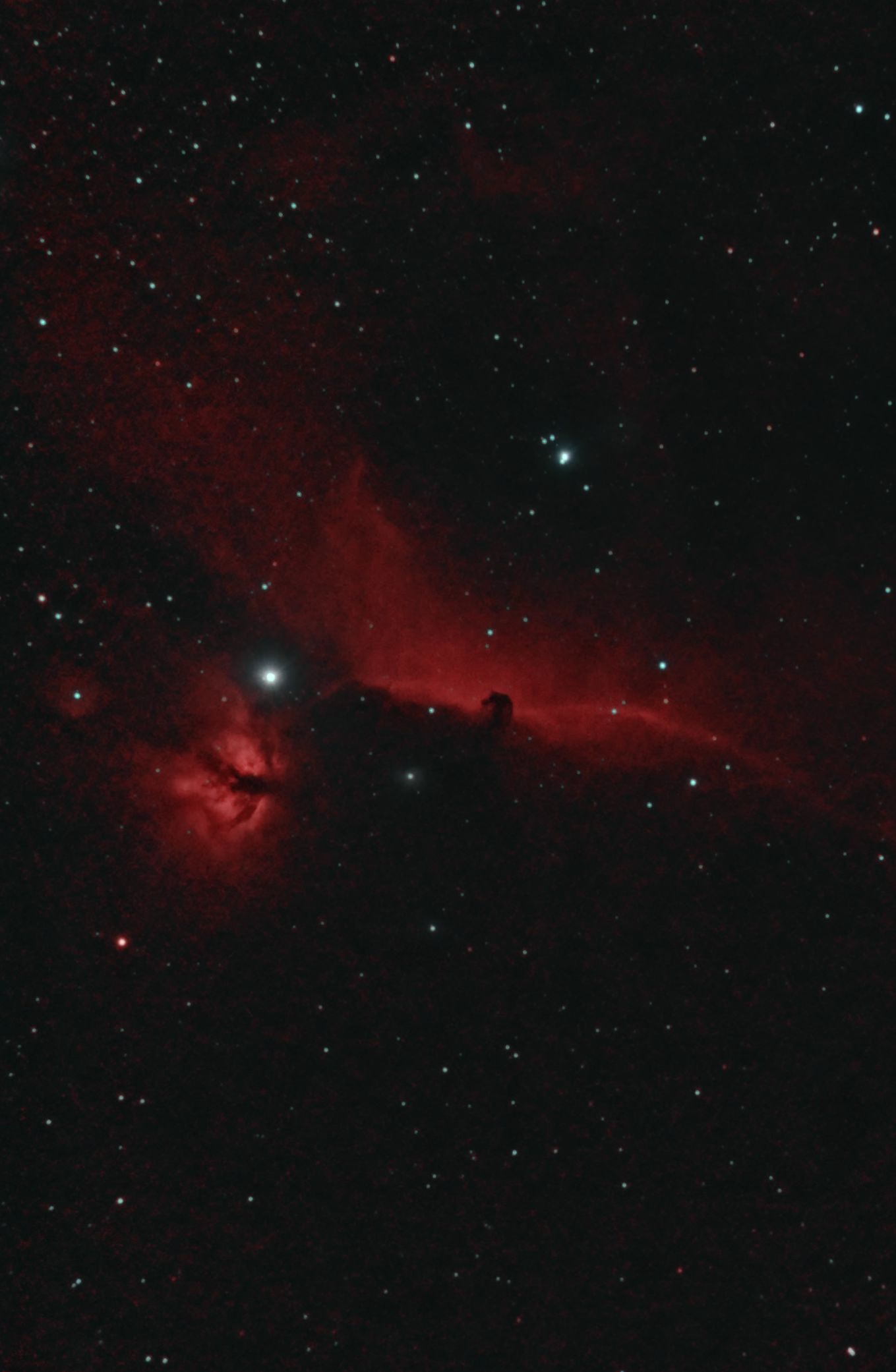 The Flame and Horsehead Nebulas near the star Alnitak in Orion
The Flame and Horsehead Nebulas near the star Alnitak in Orion
Why not take a look at my 'Orion Page' on Padlet?
- Details
- Category: Astrophotography
M71 is an irregularly shaped and rather loose globular cluster of stars in the constellation Sagitta (not to be confused with Sagitarius).
The rather atypical Globular Cluster M71
- Details
- Category: Astrophotography
Page 18 of 23

